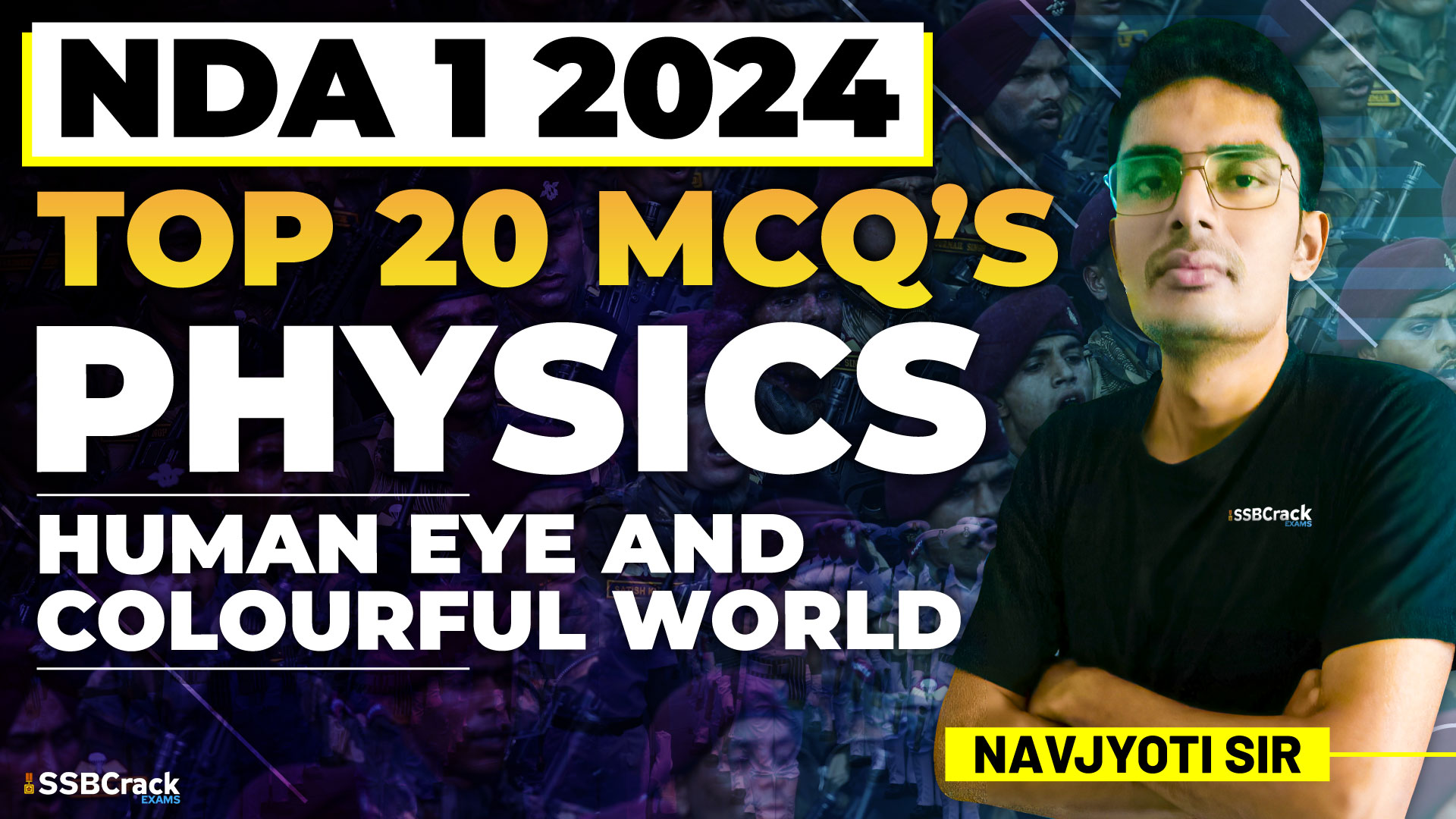Welcome to the NDA 1 2024 Physics Lecture focusing on the Human Eye and The Colourful World through the lens of Multiple Choice Questions (MCQs). In this session, we’ll explore various MCQs related to the topic, reinforcing our understanding of the intricate mechanisms of the human eye and the fascinating phenomena of color perception. Let’s dive in!
Understanding the Human Eye
Before we delve into the MCQs, let’s briefly review the basics of the human eye. The human eye is a complex optical system that allows us to perceive the world around us. It consists of several key components, including the cornea, iris, pupil, lens, retina, and optic nerve. These components work together to capture, focus, and transmit light signals to the brain, where they are interpreted as visual images.
Human Eye And The Colourful World Important MCQs
Q) A student is not able to see the blackboard question when seated at A distance of 5 m from the board. The defect he is suffering from is
A. Myopia
B. Presbyopia
C. Hypermetropia
D. Astigmatism
Ans : C
Q) The dispersion of light into its components by prism is due to
A. Each component gets deviated by the same angle of Refraction.
B. Each component gets deviated by a different angle of Refraction.
C. Reflection of each component light by different angle.
D. Reflection of each component light by same angle.
Ans : B
Q) Tyndall effect is a phenomenon of
A. Scattering of light by the colloidal particles.
B. Refraction of light by the colloidal particles.
C. Dispersion of light by dust particles.
D. Refraction of light by dust particles.
Ans : A
Q) Humans can see objects at different distances with contrasting illuminations. This is due to
A.Far- sightedness
B.Near-sightedness
C.Far-sightedness and Near-sightedness
D. Accommodation of eye
Ans : D
Q) The part of the human eye on which the image is formed is
A. Pupil
B. Retina
C. Cornea
D. Iris
Ans : B
For an explanation of the above questions and other related MCQs, please refer to the YouTube video above.



















